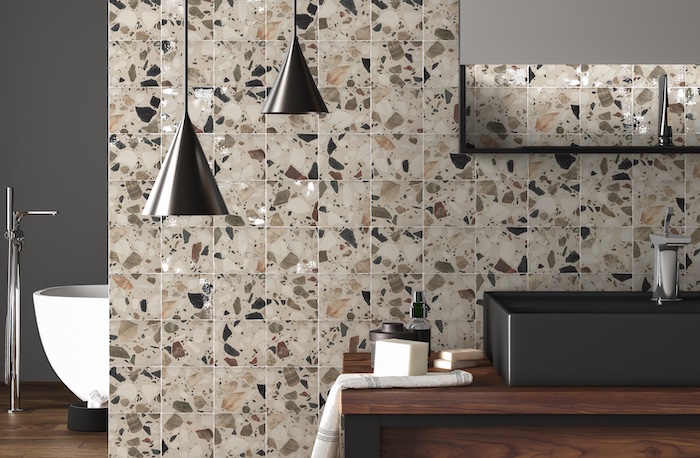Color in Ceramics – An Expert’s Insights

February 5, 2024
Color in Ceramics – An Expert’s Insights
The first step in understanding controlling color in ceramics is to understand that even if a glaze layer is called “opaque”, by nature as a suspension, any glaze does have enough transparency/bleed that the color tone is influenced by the colors beneath it. It’s helpful to think of glaze as acting like watercolor paint. The color of the substrate informs each new color layered upon it.
Controlling color in tile production is one of the litmus tests for a manufacturer that separates the magicians from the muggles. Tile is a natural product which includes the pigments used in glazes and inks for surface decoration. As such, production lots do vary (noted on the carton as dye-lot or shade) from one run to the next and often even contain multiple shade lots within a single production run. A quality manufacturer will not only have a minimal number of shades within a production run, they will also be able to match shade lots from one run to the next. This is incredibly difficult because all pigments are made with natural mineral oxides and the color-tones they impart in the finished product are decided by their purity, the quantity and viscosity of the glaze application and the firing curve (line graph of temperature / time) of the kiln.
The first step regardless of whether the finished product is digital inkjet or traditional glaze is maintaining consistency of the primary glaze-coat which acts as a primer called an engobe. Most manufacturers have a small stable (often only one or two) of base-glazes that act as the jumping off point for all their collections. Keeping the tonal quality of the engobe consistent is the key to consistency in finished production pieces.
Once the base glaze consistency is figured out, there are two main paths for a manufacturer to take: traditional glaze or digital inkjet.
Traditional glaze, like the engobe, is a suspension of mineral oxides & frits (pre-fired and re-granulated silicates) mixed in an aqueous suspension. The quantity of glaze supplied and the viscosity of the solution will affect the intensity of the color. The firing curve in the kiln will affect the tonal quality of the color. In short – glaze is all about chemistry and maths.
Modern ceramicists’ task of controlling color has gotten more complex since the advent of digital inkjet decoration. If a collection is getting the inkjet treatment after an engobe there is another layer of complexity in controlling color – digital proficiency. The glaze layer is first read with a spectrophotometer to calibrate the monitors of a production designer’s computer. The graphic files are then brought into a program like Photoshop with the calibration profile applied. The color-curves can then be manipulated to finely tune the colors the mineral inks will impart to the finished tile.
Regardless, whether digital or analog, once development is complete and the collection is ready for production the task of creating and cataloguing production control samples is the next critical step for a manufacturer. The first production will supply the master-target shade for a collection, used for pre-production calibration of all future production runs. Tiles go through digital spectrophotometers and visual review for sorting into shades based on closeness to the master-control pieces. A good manufacturer will also keep a reference library of shade/dye-lots to allow for color-matching throughout the life of a tile collection.
—By Ryan Fasan, technical consultant for Tile of Spain
Photo credit: Ceramica Da Vinci
More News
April 26, 2024 | Business, Trends & Inspirations
Personalization Is Defining Today’s Luxury Projects
April 26, 2024 | Business
PIRCH Permanently Shuts Down, Files for Bankruptcy
April 25, 2024 | Awards & Events
2024 Coverings Installation & Design Award Winners Announced
April 24, 2024 | People
Oatey Announces New COO and CCO
April 23, 2024 | Trends & Inspirations
Sustainability Report: More Education Needed for Green K&B Design
April 2, 2024 | Sponsored
Whirlpool Corp. Brings Purposeful Innovation Home